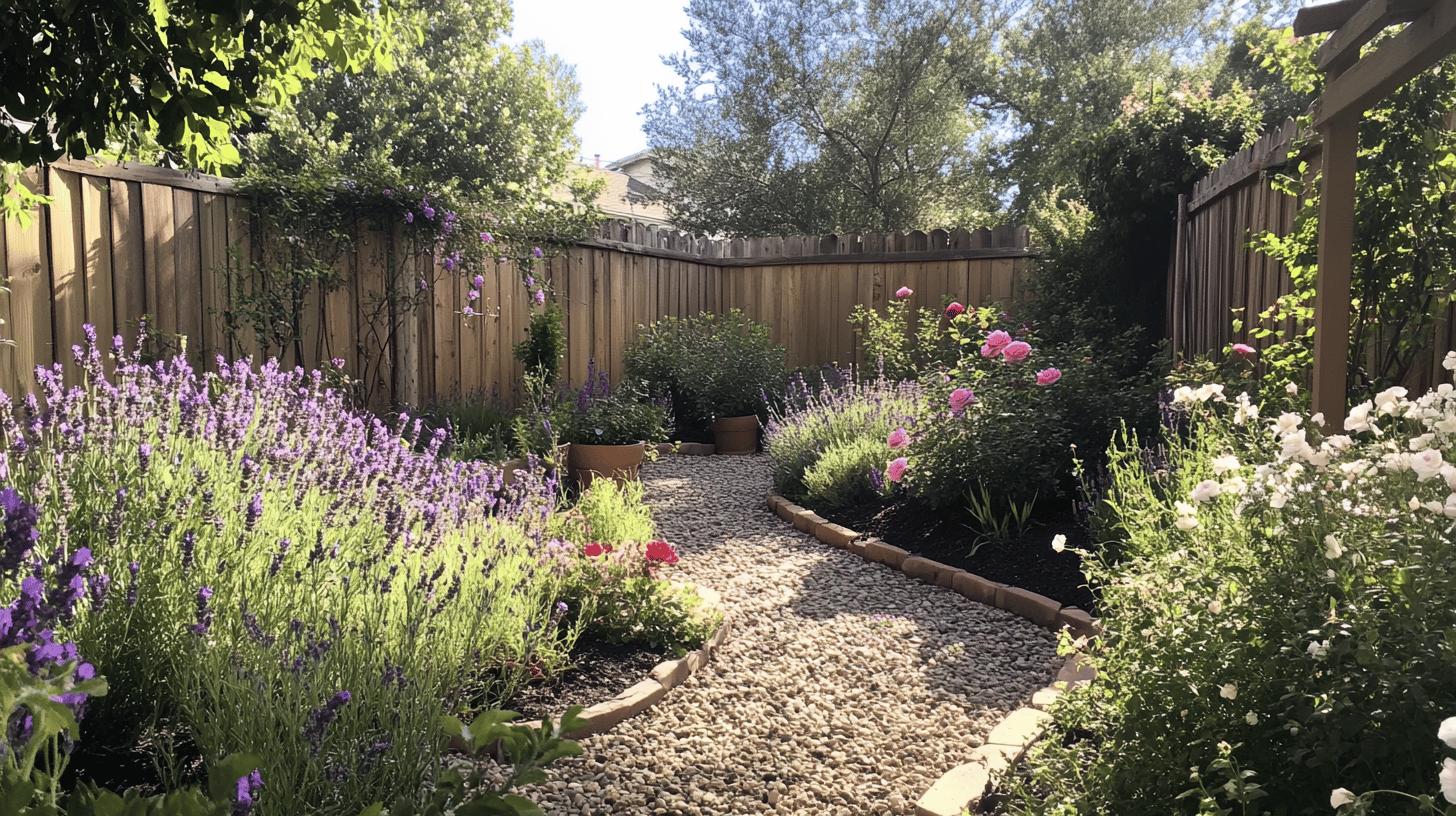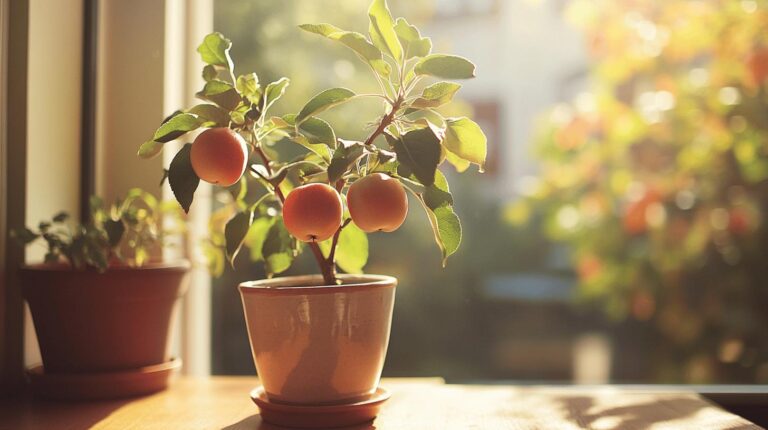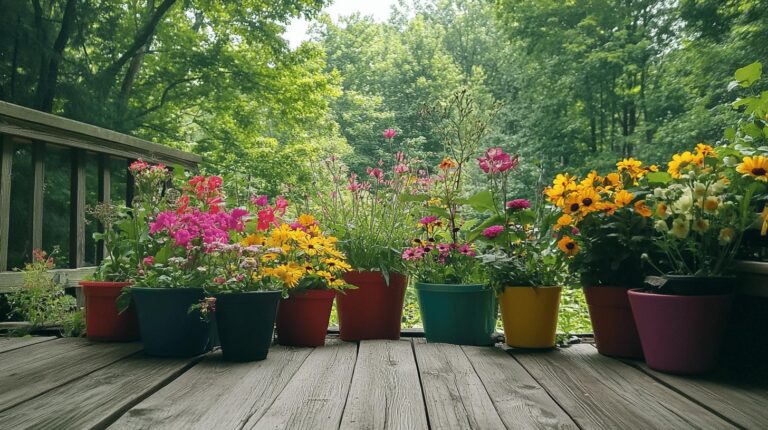The Complete Guide to Creating a Fragrant Garden
Have you ever walked through a garden and been stopped in your tracks by a wonderful smell? That magic moment when a sweet scent catches your attention can turn an ordinary day into something special. The good news is that you can create these experiences in your own yard!
Creating a fragrant garden isn’t just for expert gardeners – it’s something anyone can do, whether you have a big backyard or just a few containers on a patio. In this guide, we’ll explore everything you need to know about growing plants that smell amazing and how to combine them for a yard that delights your nose all year long.
Why Create a Fragrant Garden?
Fragrant gardens do more than just smell nice. First of all, they create lasting memories – scents have a powerful connection to our emotions and memories. Have you noticed how a certain smell can instantly transport you back to childhood or remind you of a special place? This happens because our brain processes scents in the same area where it handles emotions and memories.
Additionally, sweet-smelling plants attract helpful pollinators like bees, butterflies, and hummingbirds. These visitors not only make your garden more lively but also help your plants produce fruits and seeds.
Fragrant gardens also provide sensory enjoyment for everyone, including people with visual impairments. A scented garden becomes accessible to all visitors, regardless of their ability to see the blooms.
As a bonus, many fragrant plants can double as ingredients for cooking, teas, or homemade products like soaps and sachets. Imagine picking fresh mint for your summer drinks or lavender for homemade bath salts!
Speaking of lavender, certain plant scents can actually help reduce stress and promote relaxation. Creating a fragrant seating area with calming plants like lavender, chamomile, and jasmine can become your personal outdoor relaxation zone.
Choosing the Right Fragrant Plants for Your Garden
Creating a fragrant garden begins with selecting the best plants to enhance your outdoor space. The choice of plants can profoundly impact the sensory experience in your garden, adding layers of delightful scents that change with the seasons.
Showstopping Fragrant Plants to Consider
Magnolias: These beautiful trees burst into bloom in early spring with large, sweetly scented flowers. The saucer magnolia is particularly impressive with its pink, white, or purple blooms that can be smelled from several yards away. Star magnolias offer a more compact option with delicate white flowers perfect for smaller yards.
Peonies: These gorgeous perennials live for decades and produce large, lush flowers that also make wonderful cut arrangements. Different varieties offer different scents – some smell like roses while others have citrus or honey notes. For the strongest fragrance, look for varieties like ‘Duchesse de Nemours’ (white) or ‘Sarah Bernhardt’ (pink).
Scented Shrubs: Korean spice viburnum is a fantastic choice that fills the air with a spicy-sweet fragrance in spring. Lilacs are another classic option that produce intensely fragrant purple, white, or pink flowers. Don’t overlook mock orange, which produces white blooms with an intense citrus scent that can perfume an entire garden.
Roses: Not all roses are fragrant, so look specifically for varieties bred for scent. David Austin roses are known for their rich, complex fragrances that combine fruit, spice, and floral notes. Try ‘Lady Emma Hamilton’ with its tangerine fragrance or ‘Gertrude Jekyll’ with its strong old rose scent. When shopping, don’t be shy about leaning in to smell the blooms before buying!
Herbs: Rosemary and lavender aren’t just for cooking – they release wonderful aromas whenever you brush against them. Plant them along walkways where people will naturally touch them. Other fragrant herbs include lemon balm, which releases a bright citrus scent, and chocolate mint, which really does smell like a peppermint patty!
Choosing Plants Based on Fragrance Type
Just as perfumes have different notes, garden scents come in various families:
Sweet Floral Scents: Roses, lilacs, and sweet peas offer traditional floral perfumes that most people find pleasant.
Spicy Scents: Dianthus (carnations), some herbs, and certain roses offer clove, cinnamon, or peppery notes.
Citrus Scents: Lemon balm, lemon verbena, lemon thyme, and citrus trees provide refreshing, clean fragrances.
Vanilla/Almond Scents: Sweet autumn clematis, heliotrope, and some daphne varieties offer sweet, dessert-like fragrances.
Honey Scents: Honeysuckle, alyssum, and certain lilies provide rich, sweet honey notes.
Try combining different scent families for a complex, layered garden experience.
Considering Your Climate
Before purchasing plants, check your USDA hardiness zone (you can find this information online by searching “hardiness zone” and your zip code). This will help you choose plants that can survive winter in your area.
For cold climates (zones 3-5): Choose hardy options like lilacs, peonies, and certain varieties of roses. Also consider crabapples, which offer sweet spring fragrance, and summersweet (Clethra), which provides late-summer scent when many other plants are finished blooming.
For hot climates (zones 8-10): Consider gardenias, jasmine, and citrus trees. Angel’s trumpet (Brugmansia) offers incredible evening fragrance in warm climates, and Confederate jasmine can cover fences with sweetly scented white flowers.
For mild climates (zones 6-7): You have the widest range of options including most plants mentioned in this guide. Take advantage by creating diverse plantings with year-round interest.
Understanding Soil and Light Requirements
Most fragrant plants produce their strongest scents when growing in optimal conditions:
Sunlight: The majority of highly fragrant plants need at least 6 hours of direct sunlight daily. This is because the essential oils that create scent are often produced as a response to sunlight. However, some fragrant plants like daphne, lily of the valley, and sweet woodruff thrive in partial shade.
Soil: Well-draining soil is crucial for most fragrant plants. Many Mediterranean herbs (lavender, rosemary, thyme) actually produce stronger fragrance when grown in somewhat poor, rocky soil. Roses and peonies, however, prefer rich soil with plenty of organic matter.
Water: Once established, many fragrant plants are surprisingly drought-tolerant. Overwatering can sometimes dilute the essential oils that create fragrance. That said, extreme drought stress will cause plants to focus on survival rather than producing flowers and scent.
Understanding the Seasonal Appeal of Fragrant Plants

One of the secrets to a truly great fragrant garden is planning for scent throughout the growing season. By choosing plants that bloom at different times, you’ll always have something delightful to smell when you step outside.
Spring Fragrance Stars (March-May)
Spring brings the first powerful fragrances of the year:
Magnolias: Their sweet, lemony scent announces spring has arrived. Southern magnolias have a stronger, almost tropical fragrance compared to the lighter scent of star magnolias.
Peonies: These unfold later in spring with rich, complex fragrances. Herbaceous peonies (the ones that die back in winter) typically have stronger scents than tree peonies.
Lilacs: The quintessential spring fragrance, often bringing childhood memories. French hybrid lilacs offer the strongest fragrance, while newer reblooming varieties like ‘Bloomerang’ allow you to enjoy lilac scent twice a year.
Hyacinths: These spring bulbs pack a powerful sweet perfume. Plant them near doorways or paths for maximum enjoyment of their intense fragrance.
Daffodils: Not all varieties are fragrant, but those that are offer a delicate, honey-like scent. Look for varieties like ‘Tahiti’, ‘Cheerfulness’, and ‘Yellow Cheerfulness’ for the strongest fragrance.
Flowering Fruit Trees: Cherry, apple, and plum trees offer brief but magnificent periods of sweet fragrance. Crabapples combine beautiful spring blossoms with sweet scent and colorful fall fruits.
Spring-Blooming Bulbs: Beyond hyacinths, don’t forget grape hyacinths (muscari), which have a light honey scent, and certain tulip varieties, especially the older heirloom types.
Summer Scent Superstars (June-August)
Summer gardens can be fragrance powerhouses:
Roses: June is peak rose season in most areas. To extend rose blooming into fall, look for “repeat bloomers” that produce flowers in waves throughout the growing season. Regular deadheading (removing spent flowers) encourages more blooms.
Lavender and Rosemary: These herbs thrive in summer heat. Lavender reaches peak bloom in early summer, but the foliage remains fragrant all season. English lavender (Lavandula angustifolia) has the sweetest fragrance, while lavandin hybrids offer stronger, more camphor-like scents.
Honeysuckle: The sweet nectar smell intensifies on warm evenings. Native honeysuckle varieties like trumpet honeysuckle (Lonicera sempervirens) are better ecological choices than the invasive Japanese honeysuckle.
Jasmine: Especially fragrant at night, perfect for evening gatherings. Star jasmine (Trachelospermum jasminoides) is easier to grow in many areas than true jasmine and offers similar sweet scent.
Gardenia: Its intoxicating scent is strongest in summer months. Gardenias prefer acidic soil similar to what azaleas and rhododendrons need. In colder climates, consider growing them in containers you can bring indoors for winter.
Oriental Lilies: These tall summer bloomers produce intensely fragrant flowers. The Orienpet hybrids combine the best traits of Oriental and Trumpet lilies for increased disease resistance and strong fragrance.
Heliotrope: Often called “cherry pie plant” for its sweet, vanilla-cherry scent. This old-fashioned annual is making a comeback in modern gardens.
Night-Blooming Plants: Moonflower, night-blooming jasmine, and evening primrose release their fragrance after sunset, perfect for evening enjoyment.
Fall Fragrance Options (September-November)
Don’t forget about fall scents:
Sweet Autumn Clematis: Covers itself in tiny white, vanilla-scented flowers. While beautiful, be aware this plant can be aggressive in some regions.
Witch Hazel: Some varieties bloom in fall with a spicy fragrance. ‘Diane’ and ‘Jelena’ offer both fragrance and colorful fall foliage.
Certain Roses: Some varieties have a second flush of blooms in fall. Look for “repeat bloomers” or shrub roses like ‘Knock Out’ that continue flowering until frost.
Herbs: Many herbs like sage and mint continue providing scent until frost. Brush against them during fall garden cleanup to release their aromas.
Katsura Tree: Not known for flowers, but the falling leaves of this tree release a sweet scent similar to cotton candy or caramel in autumn.
Tea Olive (Osmanthus): In warmer regions, this shrub produces tiny white flowers with an apricot scent in fall.
Scented Geraniums: Though not hardy in cold climates, these container plants can be brought indoors before frost and continue providing fragrant foliage.
| Season | Fragrant Plants |
|---|---|
| Spring | Magnolias, Peonies, Lilacs, Hyacinths, Daffodils, Flowering Fruit Trees |
| Summer | Roses, Rosemary, Lavender, Honeysuckle, Jasmine, Gardenia, Oriental Lilies, Heliotrope |
| Fall | Sweet Autumn Clematis, Witch Hazel, Reblooming Roses, Herbs, Katsura Tree, Tea Olive |
Winter Interest in the Fragrant Garden
Even winter can offer garden fragrance:
Wintersweet (Chimonanthus praecox): Produces highly fragrant yellow flowers on bare branches in winter.
Winter Daphne (Daphne odora): Intensely fragrant pink flowers appear in late winter.
Winter Honeysuckle (Lonicera fragrantissima): Blooms on bare branches with sweetly scented white flowers, often as early as January.
Witch Hazel (Hamamelis): Depending on variety, can bloom from late fall through early spring with spidery flowers and spicy scent.
Christmas Box (Sarcococca): Tiny white flowers with a powerful sweet scent appear in mid-winter.
Mahonia: Bright yellow flowers appear in winter with a light, sweet fragrance.
Fragrant Indoor Plants to Enhance Your Home
Why stop at the garden? Bring wonderful smells inside with these houseplants that add both beauty and fragrance to your living spaces.
Top Indoor Fragrance Plants
English Lavender: The perfect plant for a sunny windowsill, its calming scent can help reduce stress and promote better sleep when placed in a bedroom. The compact ‘Munstead’ variety adapts well to container life.
Gardenias: These glossy-leaved plants produce intensely fragrant white flowers. They can be a bit demanding (they need high humidity and acidic soil), but their incredible scent makes them worth the effort. For best results, place them where they’ll receive bright, indirect light and keep them away from heating vents.
Scented Geraniums: Unlike their outdoor flowering cousins, these are grown primarily for their scented leaves. Different varieties smell like rose, lemon, mint, or even chocolate! The “Attar of Roses” variety is particularly wonderful.
Jasmine: Indoor jasmine plants can fill a room with sweet perfume when in bloom. Jasminum polyanthum is the easiest type to grow indoors and typically blooms in late winter to early spring.
Coffee Plant: Even when not flowering, the leaves have a pleasant coffee scent when rubbed. As a bonus, coffee plants make attractive houseplants with glossy green leaves.
Citrus Trees: Dwarf varieties of lemon, lime, or orange trees can thrive indoors and produce both fragrant flowers and fruit. Meyer lemon is a particularly good indoor choice.
Eucalyptus: Growing a small eucalyptus in a container brings its refreshing, medicinal scent indoors. For a stronger effect, hang branches in your shower where the steam will release more fragrance.
Stephanotis: Also called “Madagascar jasmine,” this vine produces waxy white flowers with an intoxicating scent often used in wedding bouquets.
Caring for Fragrant Houseplants
Most fragrant indoor plants need:
Plenty of light: A south or west-facing window is often ideal. If your home lacks sufficient natural light, consider supplementing with grow lights during winter months.
Proper watering: Allow soil to dry slightly between waterings. Overwatering is the most common cause of houseplant death, so feel the soil before adding water.
Regular feeding: Use a balanced houseplant fertilizer during growing season (spring through fall), but reduce or eliminate feeding during winter months when growth naturally slows.
Humidity: Many fragrant plants appreciate extra humidity from misting or a pebble tray. Group plants together to create a microclimate with higher humidity.
For plants like gardenias that need high humidity, group them with other plants or use a small humidifier nearby during dry winter months. Placing them on trays filled with pebbles and water (with the pot sitting on the pebbles, not in the water) also helps increase local humidity.
Temperature: Most fragrant houseplants prefer temperatures between 65-75°F during the day and about 10 degrees cooler at night. Keep them away from hot radiators, cold drafts, and air conditioning vents.
Seasonal Care: Many flowering houseplants benefit from spending summer outdoors in a protected location. Bring them back inside before nighttime temperatures drop below 50°F.
Designing a Fragrant Garden: Tips and Ideas
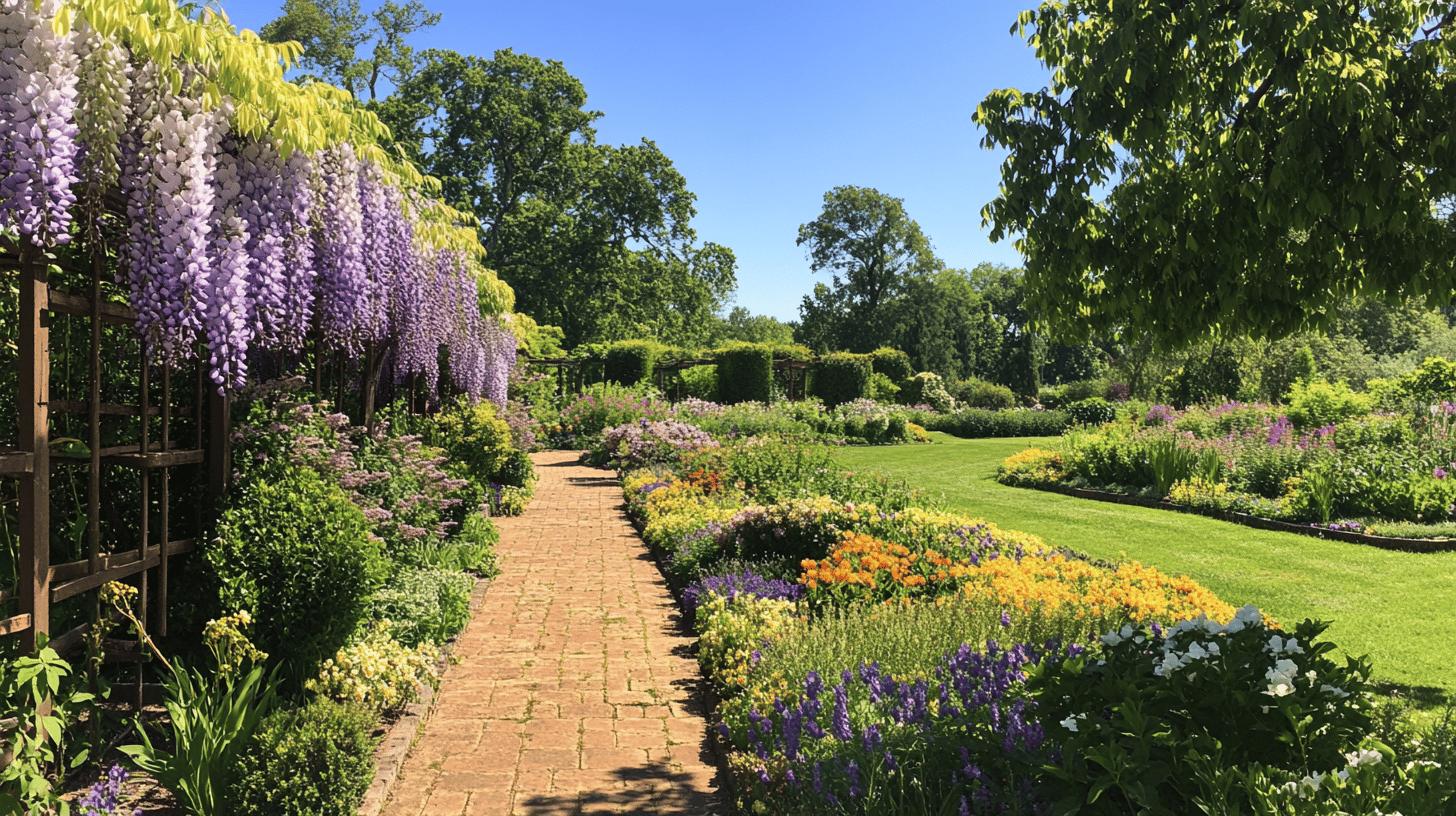
Creating a garden that smells amazing takes a bit of planning, but the rewards are worth it! Here are some design ideas to maximize the impact of your fragrant plants.
Smart Design Strategies
Plant in Layers: Combine tall fragrant trees or shrubs with medium-height flowers and low-growing ground covers for scent at every level. For example, pair a fragrant viburnum with roses and lavender, then add creeping thyme as a ground cover.
Consider Wind Direction: Plant your most fragrant varieties downwind from patios or windows so breezes carry the scent toward your home. In most areas, prevailing winds come from the west, so planting fragrant gardens on the west side often works well.
Create Scent Zones: Rather than spreading fragrant plants throughout your yard, concentrate them in specific areas for maximum impact. This creates memorable “fragrance destinations” within your landscape.
Position Near Regular Activities: Place fragrant plants along walkways, near entrances, or around seating areas where you’ll enjoy them most. Consider daily patterns – morning coffee spots can feature plants that release scent early in the day, while evening fragrance works well near dining areas.
Think About Timing: Plan your garden so that fragrant plants bloom when you’re most likely to enjoy them. If you work full-time, evening-scented plants and weekend bloomers deserve more space.
Creative Fragrant Garden Ideas
Fragrant Borders: Line a walkway or edge of your yard with a mix of fragrant plants that bloom at different times. Combine spring bulbs, summer perennials, and fall-blooming shrubs to ensure continuous interest.
Scented Trellises: Install a trellis near a seating area and plant climbing jasmine, honeysuckle, or roses to surround yourself with scent. Arbors and pergolas also make perfect supports for fragrant climbers.
Aromatic Pathways: Plant low-growing fragrant herbs like creeping thyme between stepping stones so they release scent when stepped on. Other good choices include Roman chamomile, corsican mint, and woolly thyme.
Evening Fragrance Garden: Create a special area with night-bloomers like nicotiana and evening primrose that release their scent after sunset. Paint nearby structures or furniture white to reflect moonlight and make flowers more visible at night.
Fragrant Cut Flower Garden: Dedicate a space to growing sweet-smelling flowers specifically for bringing indoors. Good choices include sweet peas, lilies, stock, freesia, and certain roses.
Sensory Garden: Create a garden that engages all senses, with fragrant plants as the centerpiece. Add plants with interesting textures for touch, colorful flowers for sight, herbs for taste, and grasses for sound.
Container Fragrance Garden: Group pots of fragrant plants on a patio or balcony. This allows you to move plants around to follow the sun and bring them closer when they’re in bloom.
Children’s Fragrance Garden: Create a special area with kid-friendly fragrant plants like chocolate cosmos, mint, lemon balm, and pineapple sage. Label plants with fun facts and encourage gentle touching and smelling.
Maintaining Plant Health for Maximum Fragrance
Plants produce their best fragrance when they’re healthy and thriving. Here’s how to keep your aromatic garden in top condition:
Basic Care for Fragrant Plants
Soil Matters: Most fragrant plants prefer well-drained soil. Add compost before planting to improve soil structure. For Mediterranean herbs like lavender and rosemary, add grit or sand to ensure excellent drainage.
Water Wisely: While needs vary by plant, most fragrant varieties prefer consistent moisture without soggy conditions. Drought stress can reduce fragrance production. Water deeply but less frequently to encourage deeper root development.
Sunlight Requirements: Most highly scented plants need at least 6 hours of direct sunlight to produce their oils and fragrances effectively. If your garden has limited sun, focus on shade-tolerant fragrant options like daphne, lily of the valley, and woodland phlox.
Temperature Considerations: Extreme heat can cause some plants to release less scent as they conserve energy, so provide afternoon shade in very hot climates. In cold regions, protect borderline-hardy fragrant plants with winter mulch.
Advanced Care Tips
Pruning: Regular pruning not only keeps plants looking tidy but also encourages new growth where many plants produce the most fragrance. For spring-flowering shrubs like lilacs, prune right after blooming to avoid cutting off next year’s flower buds.
Fertilizing: Use a balanced slow-release fertilizer in spring. Avoid over-fertilizing with nitrogen, which can promote lush growth at the expense of flowers and fragrance. Many aromatic herbs actually produce stronger oils when grown in somewhat poor soil.
Deadheading: Removing spent blooms encourages many plants to produce more flowers. With roses, cut spent flowers back to the first set of five leaflets to promote faster rebloom.
Mulching: Apply 2-3 inches of organic mulch around fragrant plants to retain moisture and reduce weeds. Keep mulch a few inches away from plant stems to prevent rot.
Protection: Shield delicate fragrant plants from harsh winter winds or extreme summer heat for better performance. Temporary burlap screens, shade cloth, or strategic placement near structures can provide protection.
Dividing: Many perennial fragrant plants benefit from division every few years. Crowded plants produce fewer flowers and therefore less scent. Spring or fall is usually the best time to divide perennials.
Pest Management: Monitor for pests regularly and address problems early using the least toxic methods. Many chemical pesticides can damage beneficial insects that pollinate your fragrant flowers.
Seasonal Maintenance Calendar
Spring:
- Cut back dead foliage from winter
- Divide overcrowded perennials
- Apply slow-release fertilizer
- Plant new fragrant additions
- Prepare irrigation systems
Summer:
- Deadhead spent flowers regularly
- Water deeply during dry periods
- Monitor for pest problems
- Take cuttings from herbs and shrubs to propagate
Fall:
- Plant spring-blooming bulbs
- Apply mulch to protect roots
- Reduce watering as temperatures cool
- Take container plants indoors before frost
Winter:
- Prune dormant trees and shrubs
- Plan next year’s fragrance garden
- Order seeds and plants for spring
- Maintain indoor fragrant plants
DIY Fragrant Garden Projects
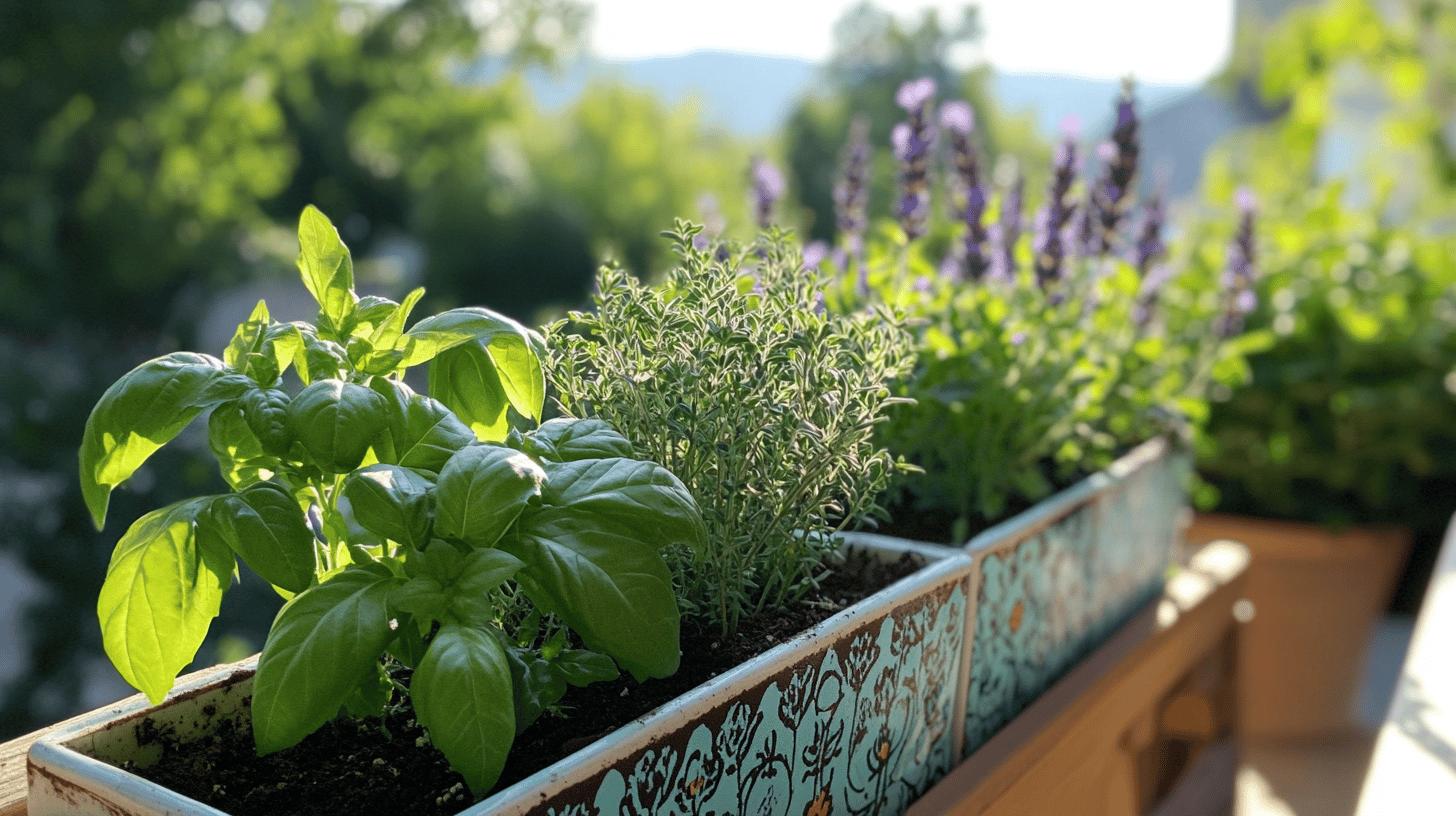
Try these fun projects to enhance your fragrant garden experience:
Weekend Projects for Fragrance Lovers
Herb Container Garden: Plant a selection of fragrant herbs in a large container for your porch or patio. Include basil, rosemary, thyme, and mint for a variety of scents. Use a container at least a foot deep with good drainage holes. Consider a “strawberry pot” with multiple pockets to keep spreading herbs like mint contained.
Aromatic Small Garden: Transform a corner of your yard into a fragrance destination with a bench surrounded by scented plants at various heights. Use a simple color scheme (like all white or purple flowers) to create a cohesive look that lets the scents take center stage.
Scented Path: Place stepping stones through a planting of low-growing fragrant herbs like creeping thyme, which releases its scent when stepped on. Make sure stones are close enough for comfortable walking but with enough space between for plants to thrive.
Potpourri Garden: Dedicate a small area to growing flowers and herbs specifically for making your own dried potpourri. Good choices include roses, lavender, scented geraniums, rosemary, and lemon verbena. Harvest on a dry day after morning dew has evaporated for best results.
Fragrant Cutting Garden: Plant rows of sweet-smelling flowers like sweet peas, lilies, and stock for bringing indoors as cut flowers. Dedicate a separate bed to cutting flowers so you won’t create gaps in your display garden.
DIY Fragrant Garden Projects for Crafters
Lavender Wands: Harvest lavender stems when flowers are just opening and weave ribbon through the stems to create traditional lavender wands that release scent for months.
Herbal Sachets: Grow and dry herbs like lavender, rosemary, and lemon verbena to fill small fabric bags for drawers and closets.
Floral Waters: Make simple floral waters by steeping fragrant petals in distilled water for natural room sprays or linen fresheners.
Pressed Flower Crafts: Press fragrant flowers like violets, roses, and herbs between book pages to create scented bookmarks or framed art.
Herbal Wreaths: Grow lavender, rosemary, thyme, and artemisia to create dried herbal wreaths that combine visual appeal with lasting fragrance.
Fragrant Plants that Thrive in Shade
Don’t give up on fragrance if your yard is shady! While it’s true that many aromatic plants prefer sun, these shade-tolerant options still offer wonderful scents:
Top Shade-Loving Fragrant Plants
Sweet Woodruff: This low-growing perennial groundcover releases a pleasant hay-like scent when its leaves are crushed. In spring, it produces small white flowers with a honey fragrance. It spreads nicely in woodland settings and makes an excellent ground cover beneath trees.
Lily of the Valley: While toxic if eaten, these spring bloomers offer an intensely sweet fragrance and thrive in woodland settings. Their white bell-shaped flowers have been used in high-end perfumes for centuries. They spread readily, making them perfect for naturalizing in shady areas.
Hostas: While grown primarily for their foliage, some hosta varieties produce remarkably fragrant flowers in late summer. Look for varieties like ‘So Sweet’, ‘Fragrant Bouquet’, and ‘Guacamole’ that produce white flowers with a sweet scent similar to lilies.
Daphne: This shade-tolerant shrub produces intensely fragrant pink or white flowers in early spring. Daphne odora ‘Aureomarginata’ has the added bonus of variegated foliage. Though somewhat finicky to grow, its incredible fragrance makes it worth the effort.
Cyclamen: These shade-lovers offer both beautiful flowers and a delicate, sweet scent. Hardy cyclamen (Cyclamen hederifolium) can thrive outdoors in zones 5-9 and bloom in fall when little else is flowering.
Winter Honeysuckle: This shrub blooms in late winter with incredibly fragrant white flowers, even in partial shade. It’s not as showy as some plants, but its fragrance is exceptional when little else is blooming.
Clethra: Also called summersweet, this native shrub produces bottle brush-like flowers with a sweet, spicy fragrance in late summer. It grows well in partial shade and wet soils where many other plants struggle.
Woodland Phlox: This native groundcover (Phlox divaricata) produces lavender-blue flowers in spring with a sweet honey fragrance. It combines beautifully with spring bulbs in dappled shade.
Virginia Sweetspire: This native shrub grows well in partial shade and produces fragrant white flower spikes in early summer. It also offers outstanding fall color as a bonus.
Fringetree: A small native tree that produces clouds of fragrant white flowers in late spring. It grows well in light shade and is more disease-resistant than many flowering trees.
Tips for Maximizing Fragrance in Shade
Even in shade, you can enhance fragrance by:
- Planting in pockets that receive morning sun but afternoon shade
- Choosing locations with good air circulation to help spread scents
- Using light-colored fences or walls to reflect light onto plants
- Grouping fragrant plants together to concentrate their scents
- Selecting lighter soil mixes that warm up more quickly in spring
Incorporating Herbs for Fragrance and Flavor
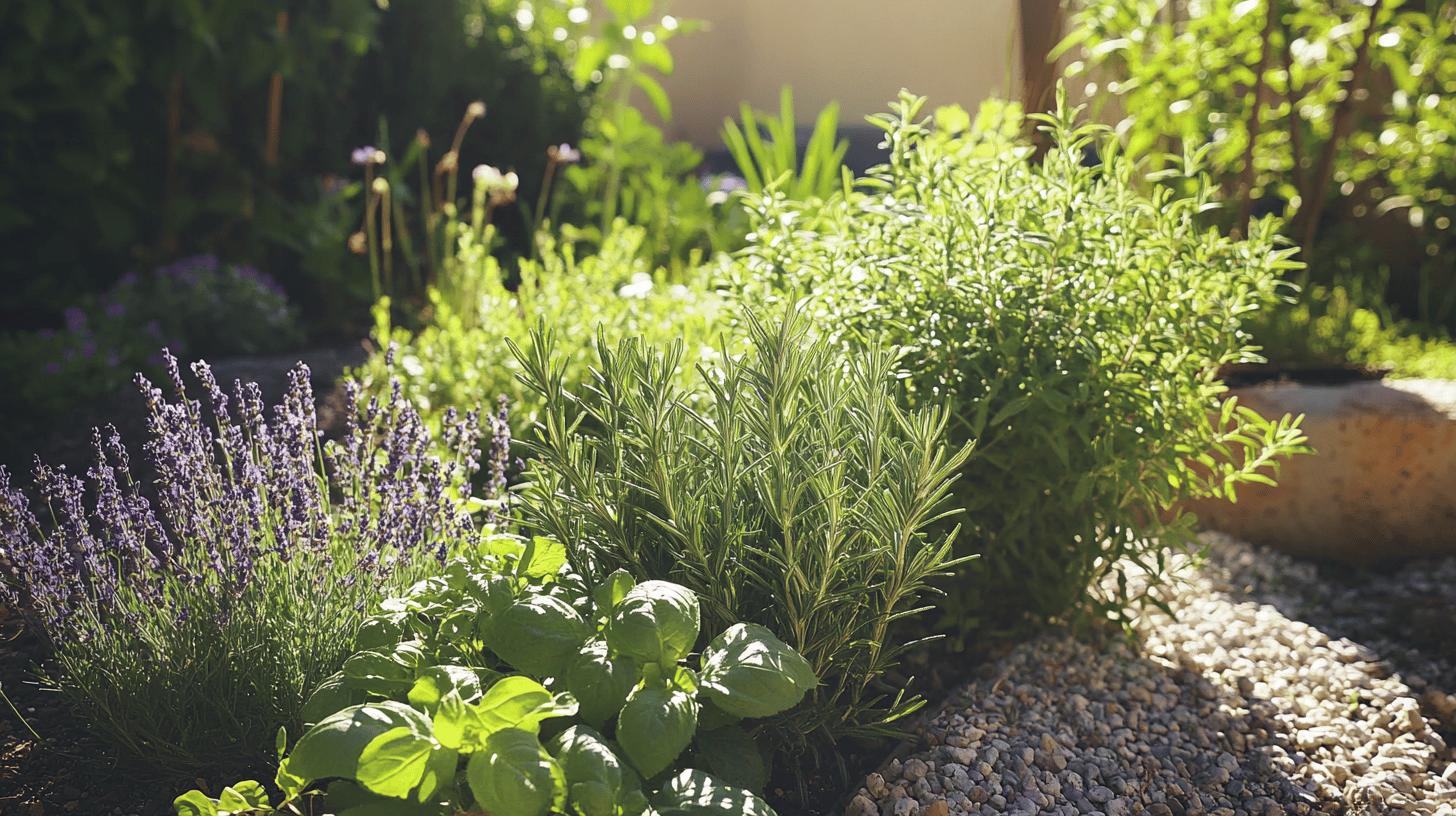
Herbs are the multitaskers of the fragrant garden – they smell wonderful, attract pollinators, and provide fresh flavors for your kitchen!
Best Dual-Purpose Fragrant Herbs
Rosemary: This woody perennial has an invigorating pine-like scent and flavors everything from roasted potatoes to focaccia bread. The upright varieties make beautiful small hedges, while prostrate forms can spill over walls or container edges.
Lavender: Beyond its calming fragrance, culinary lavender can be used in cookies, lemonade, and herb blends. English lavender (Lavandula angustifolia) has the sweetest flavor for cooking, while lavandin hybrids make better dried bundles and sachets.
Thyme: Available in many varieties including lemon thyme and orange thyme, each with distinctive scents and flavors. Creeping thymes make fragrant ground covers, while upright forms work well in herb gardens and containers.
Basil: The classic summer herb comes in many scent profiles including cinnamon, lemon, and licorice. Even standard basil varieties differ – ‘Genovese’ has strong clove notes, while ‘Sweet Basil’ is milder and sweeter.
Mint: From chocolate mint to pineapple mint, these easy-growing herbs offer amazing diversity of scent and taste. Always grow mint in containers or barriers as it spreads aggressively in open soil.
Additional Fragrant Herbs Worth Growing
Lemon Verbena: Perhaps the most intensely lemon-scented herb, with long leaves perfect for teas and desserts.
Scented Geraniums: Not true geraniums, these Pelargoniums offer incredible scent diversity including rose, lemon, mint, pine, and coconut varieties.
Oregano: The hot, spicy fragrance of oregano is as useful in the kitchen as it is attractive to pollinators.
Sage: Available in many varieties with different scent profiles and leaf colors. Pineapple sage produces tubular red flowers that attract hummingbirds.
Lemon Balm: A member of the mint family with a bright lemony scent, perfect for teas and desserts.
Growing Tip:
Most culinary herbs prefer full sun and well-drained soil. Many Mediterranean herbs like rosemary, thyme, and lavender actually produce more fragrant oils when grown in slightly poor soil without excessive fertilizer. Raised beds or containers with fast-draining soil mix often produce the healthiest and most flavorful herbs.
Harvesting Herbs for Maximum Flavor and Fragrance
For most leafy herbs:
- Harvest in the morning after dew has dried but before the heat of the day
- Cut stems just above a leaf node to encourage bushier growth
- Harvest regularly to prevent flowering (except when you want the flowers for pollinators)
- Dry bundles upside down in a warm, dark, well-ventilated location
Creating a Fragrant Pathway in Your Garden
A fragrant pathway turns a simple garden walk into a sensory experience. As you move through the garden, each step releases new scents into the air.
Best Plants for Fragrant Pathways
Sweet Alyssum: This low-growing annual produces tiny white or purple flowers with a sweet honey fragrance. It self-seeds readily, coming back year after year, and can bloom continuously from spring through fall in many climates.
Creeping Thyme: Several varieties are available, all releasing their herbal scent when stepped on. Woolly thyme (Thymus pseudolanuginosus) has fuzzy gray leaves and handles foot traffic well, while red creeping thyme (Thymus coccineus) offers colorful flowers.
Roman Chamomile: Creates a soft, apple-scented carpet that can handle light foot traffic. Unlike German chamomile, this variety is a low-growing perennial perfect for path plantings.
Mint: Varieties like corsican mint form a low mat of tiny leaves with big fragrance. Corsican mint has such tiny leaves it looks almost like moss but releases an intense minty scent when touched.
Ajuga: Also called bugleweed, some varieties offer a pleasant scent when crushed. ‘Chocolate Chip’ has small leaves and stays more compact than other varieties.
Woolly Yarrow: The ferny foliage releases a spicy scent when walked on, and the low-growing habit stands up well to occasional foot traffic.
Pennyroyal: Another mint family member that forms a low mat with an intense minty scent. Be aware this plant should not be used where pregnant women might encounter it.
Oregano: Creeping oregano varieties like Origanum humile make excellent pathway plants with culinary uses.
Path Construction Tips:
For fragrant pathways, use stepping stones with ample space between them for planting. The gaps between stones should be at least 2-3 inches to allow plants enough room to grow but close enough that they’re occasionally stepped on to release their scent.
Materials that Work Well with Fragrant Path Plants:
- Natural flagstone with irregular edges allows for organic planting pockets
- Square pavers set with wide, consistent joints
- Gravel paths with defined planting areas along the edges
- Wooden rounds set into soil with spaces between
Installation Tips:
- Set stones on a base of sand or fine gravel for drainage and stability
- Make sure stones are level and firmly set so they don’t rock when stepped on
- Allow some areas with wider spaces for more substantial plants
- Install edging along the sides to keep the path defined
- Include occasional wider areas for focal point plants or small seating areas
Fragrant Climbing Plants for Vertical Appeal
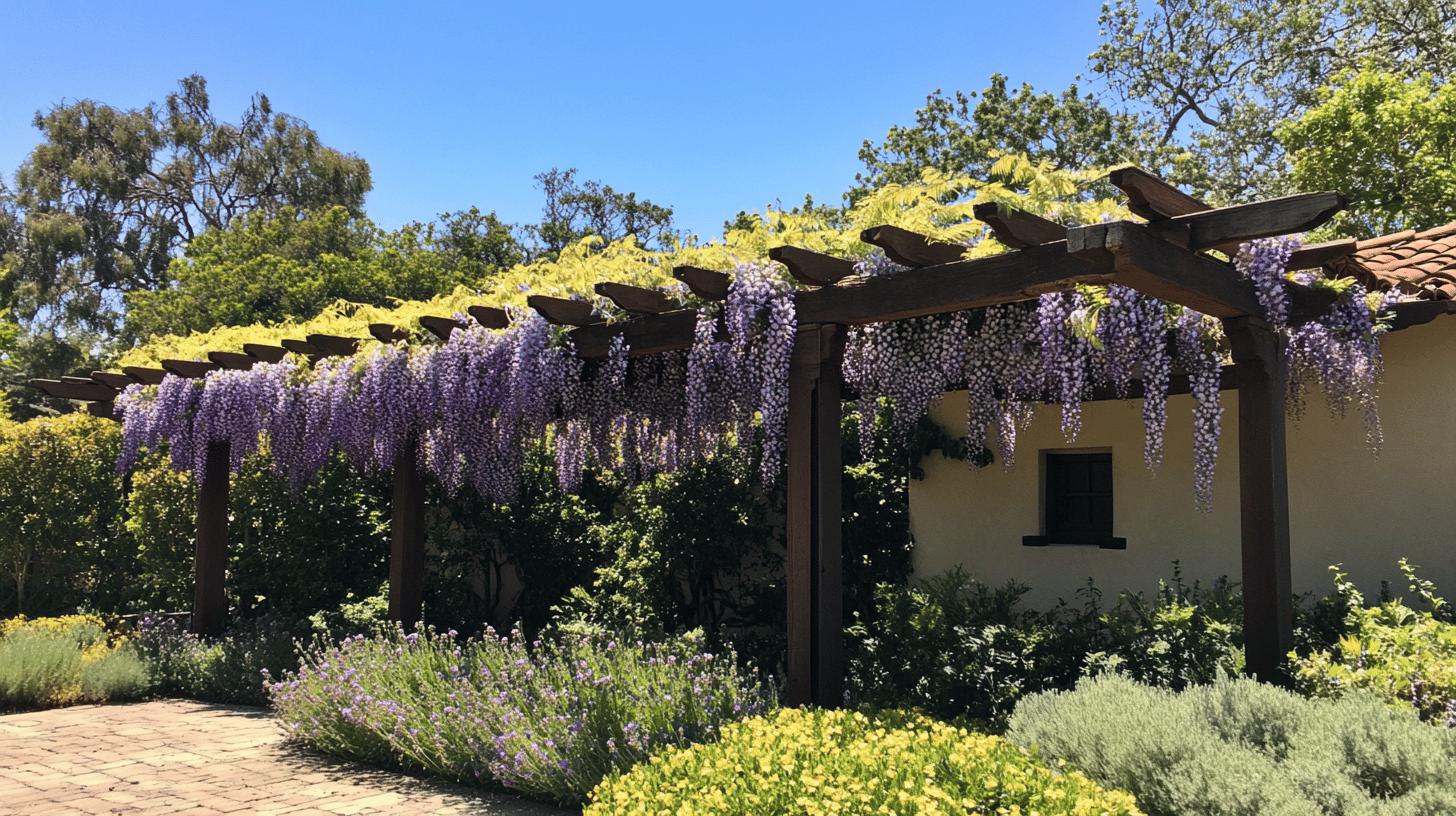
Looking to maximize fragrance in your garden? Think upward! Climbing plants are garden superstars that bring scents closer to nose level and fill the air with perfume from above. These vertical growers also save valuable space while creating stunning visual backdrops.
Showstopping Scented Climbers
Wisteria
This dramatic climber creates cascades of fragrant purple, white, or pink flowers in spring that dangle like grape clusters. Chinese wisteria offers a sweet, intense perfume, while Japanese varieties provide a softer, more delicate scent. Beyond its heavenly fragrance, wisteria creates an unforgettable visual display, especially when trained over pergolas or arbors.
Growing tips: Wisteria needs extremely sturdy support—it can literally pull down weak structures over time! Plant in full sun for best flowering, and be patient—some plants take 3-5 years to begin blooming. Choose grafted varieties for faster flowering.
Honeysuckle
The classic sweet-smelling vine that connects many of us to childhood memories. Honeysuckle vines produce trumpet-shaped flowers filled with sweet nectar that attracts both hummingbirds and humans. The fragrance intensifies in the evening, making honeysuckle perfect near patios used for nighttime entertaining.
Growing tips: Look for native honeysuckle varieties like trumpet honeysuckle (Lonicera sempervirens) rather than the invasive Japanese honeysuckle. While native types may have slightly less powerful fragrance, they’re much better for local ecosystems and still provide wonderful scent.
Jasmine
Few scents are as intoxicating as jasmine, especially in evening hours when the fragrance seems to intensify. Different varieties bloom at different times, allowing you to extend the jasmine season. Star jasmine (Trachelospermum jasminoides) isn’t a true jasmine but offers similar sweet scent and is more adaptable to various growing conditions.
Growing tips: Most jasmines prefer protected locations and rich, well-draining soil. In colder regions, grow them in containers you can move indoors for winter. Regular pruning keeps plants full and prevents them from becoming too woody.
Climbing Roses
Unlike their bushy cousins, climbing roses can reach heights of 10-20 feet while offering the same beautiful blossoms and memorable fragrance. Look for fragrant varieties like:
- ‘Zéphirine Drouhin’ – An old Bourbon rose with raspberry-pink blooms and a strong, sweet scent. Remarkably thornless, making it perfect for pathways.
- ‘New Dawn’ – Soft pink flowers with a mild, sweet fragrance. Exceptionally disease-resistant and repeat-blooming.
- ‘Don Juan’ – Deep red blooms with an intense damask rose fragrance. Dramatic against light-colored walls.
- ‘Climbing Iceberg’ – Pure white flowers with a light honey scent. Extremely reliable and disease-resistant.
Growing tips: Train climbing roses horizontally along their supports to encourage more flowering. Unlike true vines, roses don’t climb by themselves—they need to be tied to their supports.
Sweet Autumn Clematis
This fall-blooming vine covers itself with clouds of tiny white flowers that smell of vanilla and almonds. When most garden fragrance is fading, sweet autumn clematis (Clematis terniflora) puts on a spectacular show. The fluffy seed heads that follow provide winter interest.
Growing tips: Plant where it has room to spread—this vigorous grower can reach 20-30 feet. In some regions, it can be aggressive, so monitor its growth. Unlike wisteria, it doesn’t need extremely sturdy support.
Additional Fragrant Climbers Worth Trying
- Chocolate Vine (Akebia quinata) – Unusual purple-brown flowers in spring with a subtle chocolate-vanilla scent. Less aggressive than many vines.
- Sweet Peas (Lathyrus odoratus) – Annual climbers with incomparably sweet fragrance. Old-fashioned varieties typically offer stronger scent than modern types.
- Climbing Hydrangea – While not intensely fragrant, it offers a pleasant, light scent and can grow in shadier spots than most flowering vines.
- Passion Flower Vine – Some varieties offer sweet fragrance along with their exotic-looking blooms.
Support Structures: Form and Function
Ensure your structure is strong enough for your chosen vine—this is especially critical for heavyweight climbers like wisteria and climbing roses.
Support Options by Vine Type
For Heavy Climbers (Wisteria, Climbing Roses)
- Sturdy pergolas with 6×6 posts
- Heavy-duty arbors with 4×4 supports
- Reinforced trellises attached to house structures
- Heavy-gauge metal arbors specifically designed for roses
For Medium-Weight Vines (Honeysuckle, Some Clematis)
- Standard wooden or metal arbors
- Wall-mounted trellis systems
- Sturdy obelisks for container growing
For Lighter Vines (Jasmine, Sweet Peas)
- Decorative metal trellises
- String or wire systems
- Lightweight obelisks
- Repurposed items like old ladders or bed frames
Creative Ways to Incorporate Fragrant Climbers
Near Outdoor Living Areas Create a fragrant ceiling over seating areas with climbers trained on a pergola. The overhead scent creates an immersive sensory experience.
Along Walking Paths Install arches along garden paths and train different fragrant vines on each for a changing sensory journey.
Near Windows and Doors Position trellises with fragrant climbers near frequently opened windows so the scent can drift indoors. Jasmine and honeysuckle work beautifully for this purpose.
On Fences and Boundaries Transform ordinary property boundaries into fragrant living walls. Mix early, mid, and late-season climbers for continuous interest.
Vertical Container Gardens Even balcony gardeners can enjoy fragrant climbers. Use large containers (minimum 18-inch diameter) with trellises or obelisks for jasmine, smaller climbing roses, or sweet peas.
Caring for Fragrant Climbers
Most fragrant climbing plants share similar care needs:
Planting and Establishment
- Plant in spring or fall for best results
- Prepare soil well with compost and slow-release fertilizer
- Install support structures before planting to avoid root disturbance later
- Position the plant about 12-18 inches away from walls or fences to allow air circulation
Training Tips
- Begin training young plants early by gently tying new growth to supports
- For roses and wisteria, train main stems horizontally to encourage more flowering shoots
- Check ties regularly to prevent them from cutting into growing stems
- Remove ties that become too tight and replace with looser ones
Seasonal Maintenance
- Spring: Apply slow-release fertilizer and check support structures for winter damage
- Summer: Provide consistent water during dry periods; deadhead spent flowers to encourage reblooming
- Fall: Plant new vines; prune summer-flowering varieties after bloom
- Winter: Prune wisteria and roses while dormant; protect tender varieties in cold climates
Pruning Pointers
- Wisteria: Prune twice—summer after flowering and winter for shape
- Climbing Roses: Prune in late winter, removing old or weak canes and shortening side branches
- Clematis: Varies by type—sweet autumn clematis needs hard pruning in late winter
- Honeysuckle: Thin and shape after flowering; remove tangled growth
With proper support and care, fragrant climbing plants can transform ordinary garden spaces into vertical scent gardens that delight the senses and create lasting memories. Start with one spectacular specimen near your favorite outdoor spot, and you’ll soon be looking for more places to add these fragrant vertical wonders!
